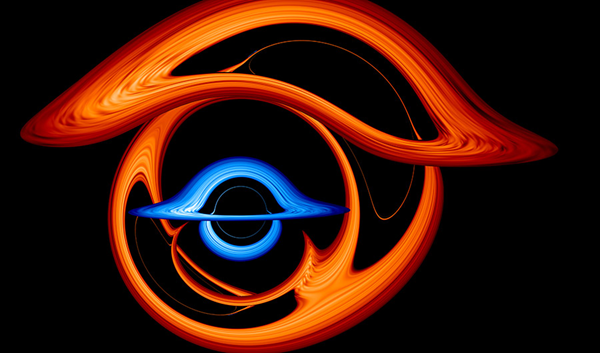There have been dozens of subsequent gravitational wave detections, and more will surely follow. Each new measurement helps physicists test general relativity, and if they show deviations that point to physics that go beyond what’s included in that famous theory, that could be Nobel-worthy too. But researchers don’t want to claim to have found something new, such as a flaw in Einstein’s theory, unless they’re absolutely sure. Considering the uncertainties involved, a team of physicists urges caution.
“The more tests you do, the more likely it is that one of them will show a false positive. That’s an extra reason to be cautious,” said Christopher Moore, a physicist at the University of Birmingham, U.K., who led the research.
In a new study published on Wednesday in the journal iScience, Moore and his colleagues argue that scientists need to take care while interpreting catalogs of gravitational wave measurements. They show how errors could accumulate and erroneously suggest the existence of violations of Einstein’s theory. If scientists collect signals from dozens of gravitational wave events, and if they interpret the data very carefully, the problem might be reduced. But the danger never goes away, Moore said.
General relativity provides an explanation for how massive objects warp the fabric of space-time, and these curves indicate gravity. Einstein’s theory predicted that when a pair of black holes or dense stars smash into each other, they produce ripples in space-time — gravitational waves — that could be detected.
There’s no bona fide rival to relativity theory, so scientists can’t test how the theory compares to another. Instead, they test whether the theory is consistent with measurements, including the gravitational waves generated as an orbiting pair of black holes spirals inward or by a subsequent stage known as black hole “ringdown.” The latter stage occurs after black holes have collided and the single resulting black hole rings like a struck bell, expelling waves in the process. In any tests, however, researchers have to make approximations and simplifications with their models, complicating their interpretation.
It might seem like an analysis showing that measured gravitational waves contradict general relativity would mean there’s something wrong with the theory, but that’s a naive idea, said Salvatore Vitale, an MIT physicist and member of LIGO.
“What you’re really testing is not just whether the data is consistent with general relativity, but rather whether the data is consistent with your interpretation and extraction of the signal within general relativity, which comes with some errors,” he said. And there could be small errors in the experiment, too.
Before 2015, no one knew for sure that gravitational waves could ever be detected. Now the experiments have been improved and physicists have amassed some 50 such events so far, and eventually they’ll be spotting one every week or so. “I’m willing to bet a good dinner at a good restaurant that by 2023, we will have way more than 100 signals,” Vitale said.
But simply testing relativity with more gravitational waves isn’t necessarily a solution, unfortunately, since Moore and his colleagues demonstrate that, although some errors cancel each other out, others can add up.
“When we start to put together multiple observations, modeling errors can conspire and build up and lead you to make a false detection of a violation of Einstein’s theory,” said Aaron Zimmerman, a physicist at the University of Texas at Austin and LIGO member.
Moore and his team showed that, in a worst-case scenario, even when analyzing 30 gravitational wave events, it’s possible the errors could misleadingly point to a deviation from general relativity. To reduce the danger of that happening, it helps to combine multiple independent models in the analysis, Zimmerman said.
In 2011, physicists working on the OPERA experiment in Gran Sasso, Italy, controversially claimed to measure tiny particles known as neutrinos traveling faster than the speed of light, breaking the universe’s speed limit in violation of special relativity. But two sources of error had been overlooked and the measurement turned out to be inaccurate.
Although scientists studying gravitational waves have three experiments performing detections (including a European experiment), rather than a single one like OPERA, they know the risk of such a scenario remains. To researchers testing general relativity with gravitational waves, Moore has some advice: “You should choose the events you want to study carefully, you should think carefully about what the right sort of test is, and you should be skeptical of anything that you find,” he said.
This story was originally published with Inside Science. Read the original here.










